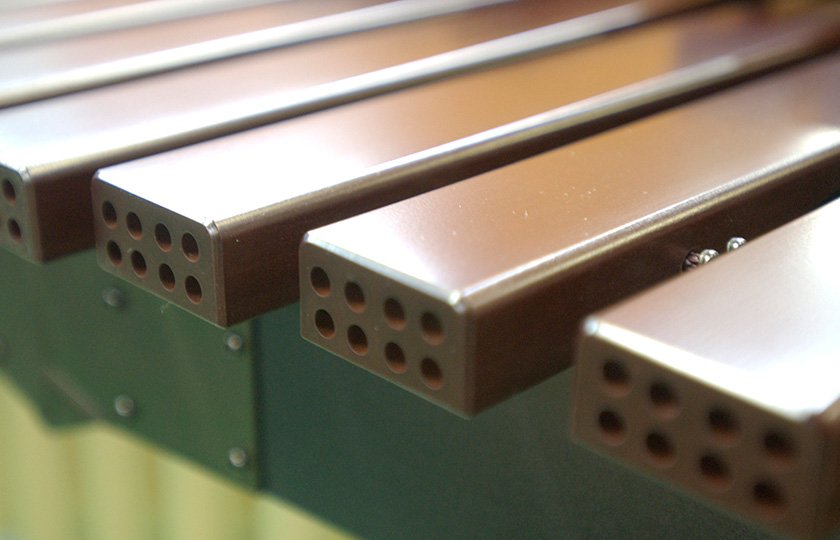Trivia
Rosewood's understudy is FRP
Honduras rosewood is considered to be the ideal material for a marimba's tone plates. This wood is scarce even today and will continue to grow more difficult to acquire in the future. Among other factors, it takes 200 years of growth before the trees can be used as material for musical instruments, which has resulted in three rubber trees being planted for every rosewood tree felled in the region where it is grown. Tree farmers prefer trees that will return quick profits to ones that cannot be sold during their own lifetimes.
To resolve this problem, FRP-based materials have been designed with the intention of producing a sound similar to that of rosewood with another material. FRP stands for fiber-reinforced plastic. It is a synthetic material made by compacting bundles of glass fibers together with plastic. Compared to wood, FRP is relatively unaffected by changes in heat and humidity, allowing instruments to be played with a stable sound outdoors even in the middle of summer or when it is overcast. Such instruments are used frequently, especially in the US, by the marching bands that perform during the halftimes of outdoor sporting events.

These tone plates made from FRP have holes running through them that are modeled on the xylem vessels of a tree
Musical Instrument Guide : Marimba Contents
Origins
Structure
- What kind of instrument is the marimba?
- Inside and outside the resonator pipes
- There is craft to the design of the tone plates, too
- [Experiment1]Tone plate sanding depth and sound pitch experiment
- [Experiment2]Tone plate sanding location and sound pitch experiment
- [Experiment3]Try changing the material of the resonator pipes
